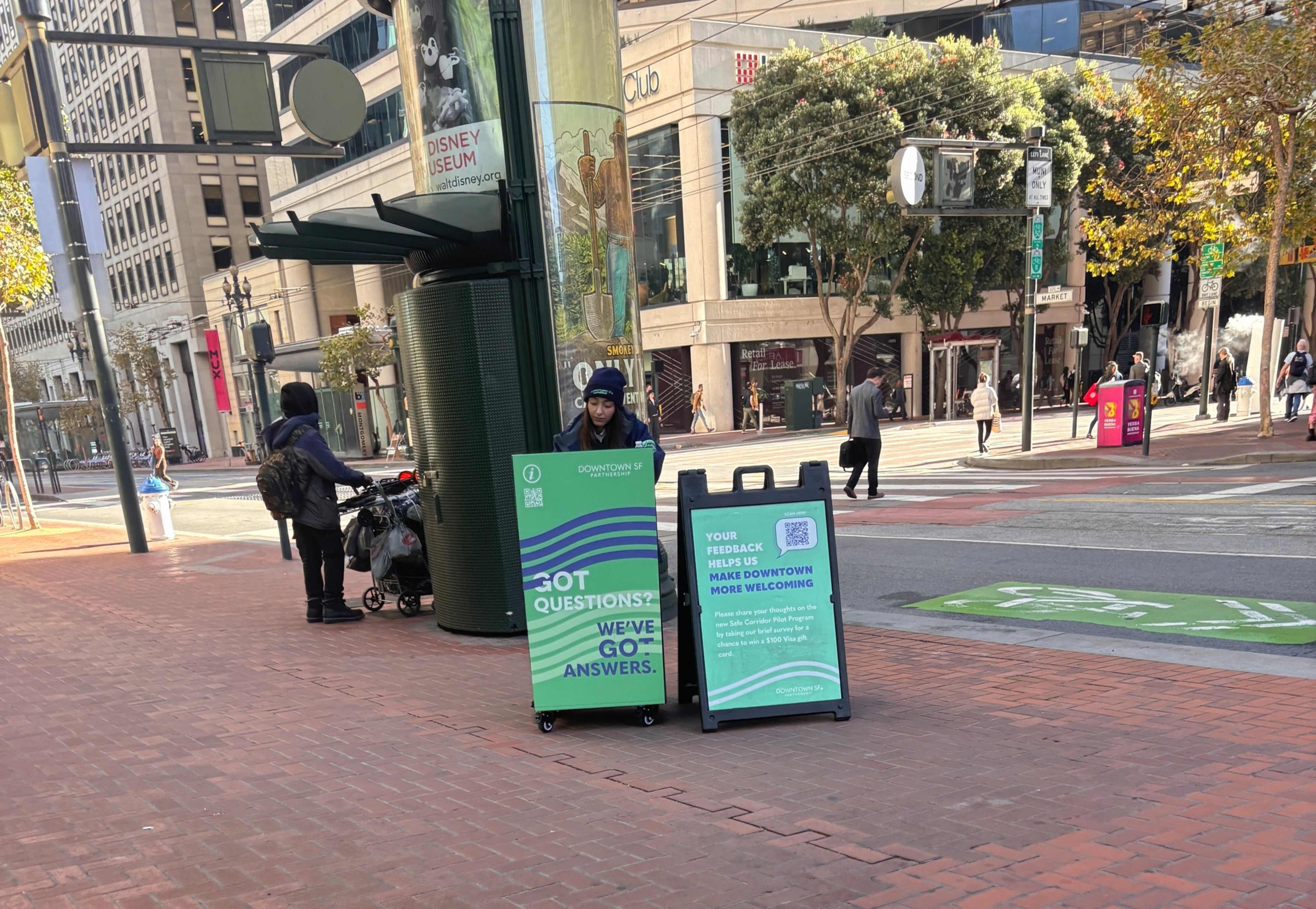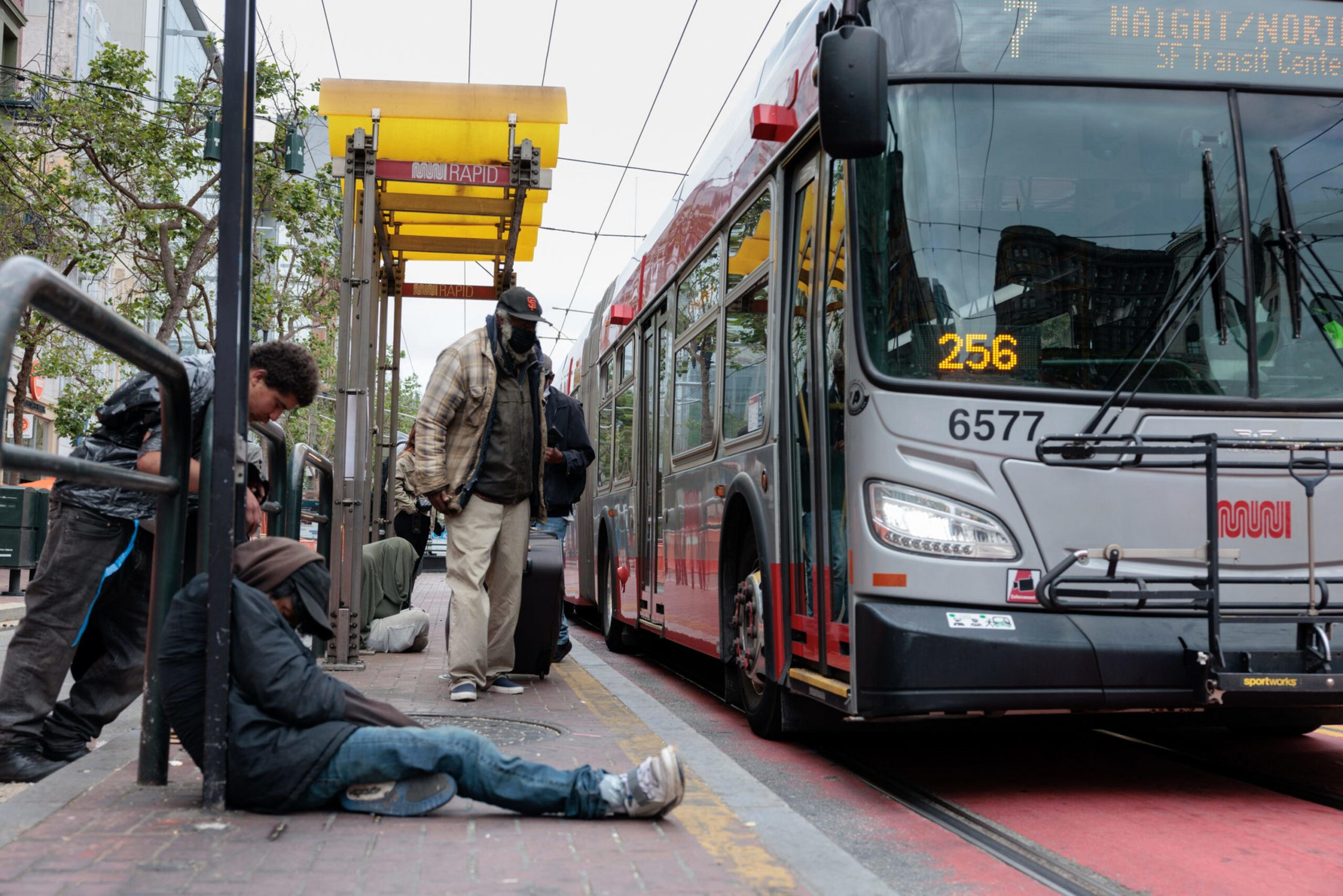For more than three months, commuters headed downtown on weekday mornings have emerged at the Embarcadero and Montgomery BART stations to see uniformed people at mint-green kiosks.
These “ambassadors” — who have set up between 6:30 and 9:30 a.m. at all six Embarcadero station exits since late July and Montgomery exits since September — are the latest initiative aimed at helping downtown San Francisco get its groove back.
During a six-week period, the ambassador program reduced safety-related 911 calls at the stations by 53%, from 55 to 26, according to Robbie Silver, executive director of the Downtown SF Partnership, which spearheaded the pilot. The number of calls related to violent incidents such as fights, assaults, and robberies decreased by 67%.

Silver attributes the 53% decline in large part to ambassadors addressing visible signs of the homelessness crisis.
“When folks are struggling on the street, oftentimes people will call 911, either because they don’t feel safe around that population or because they see somebody in need, and their gut reaction is to call the police department,” he said. “But [the SFPD] is not designed to address quality-of-life issues on the street.”
Ambassadors perform wellness checks and encourage people camped by station exits to move along, giving them information on available resources or calling in other agencies to help, he said. They also provide supplemental cleaning around station exits.
“It’s really about supporting and investing in visible progress in downtown’s recovery,” said Shola Olatyoe, CEO of the Downtown Development Corporation, which has contributed funding to extend the pilot until the end of the year.
Downtown SF Partnership and DDC hope to continue the program through 2026 and extend it to cover evening commute hours and the Powell and Civic Center stations.

Both groups are raising money for the initiative; some is from corporate sponsors that have included Google, Visa, and Amazon.
Silver estimates that funding the program at the Embarcadero and Montgomery stations next year would cost roughly $2.8 million. The DDC is still determining how much it would cost to extend the program to Powell and Civic Center stations.
Silver is making the pitch to potential funders, including large companies, that making downtown cleaner and safer will encourage commerce and in-person work at a time when SF’s budget needs all the help it can get. “There’s never been a better time to invest in the economic vitality of San Francisco and our downtown.”
